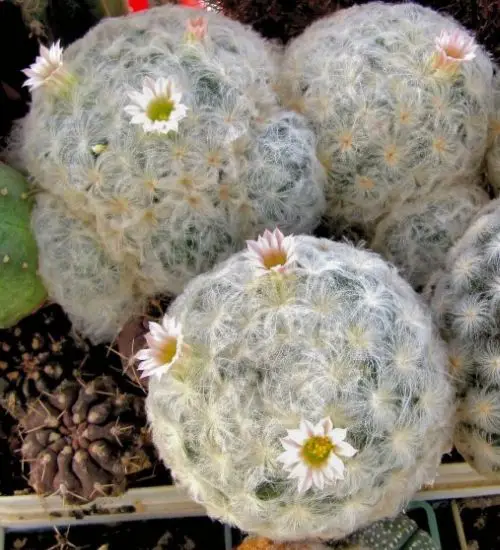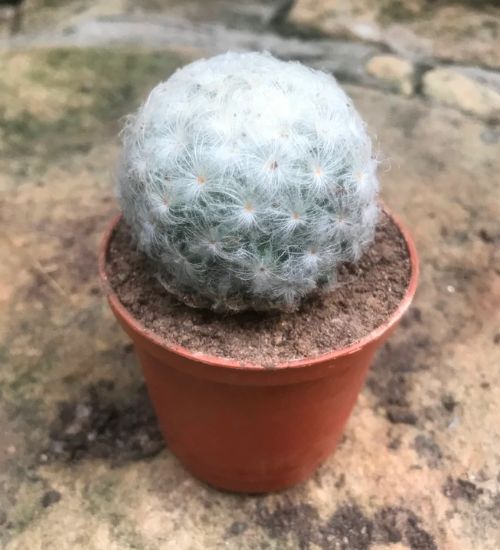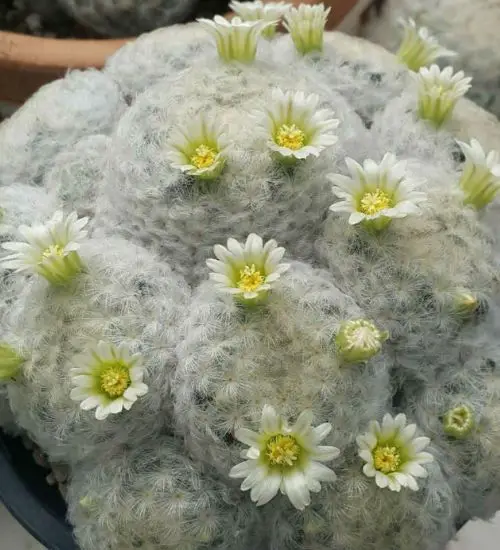Sun: full sun to partial shade
Water: Typical water needs for a succulent
Temperature: Zone 9a from 20° F to 25° F (-6.7 ° C to -3.9° C)
Winter Survival: Not cold hardy
Propagation: offsets, cuttings, seeds
Flower: In the Spring
Flower Type:
Toxic: Generally non-toxic to humans and animals
Dormant: winter
Space Requirement: Indoors
Common Problems: No major pests, Plants may rot if overwatered, Powdery mildew
Where to buy Mammillaria plumosa?
Basc Care for Mammillaria plumosa
Watering
Watering for Mammillaria plumosa is a simple task. It requires Typical water needs for a succulent.
You can water your succulent more than often in extreme conditions but make sure that the soil is completely dry before watering your succulent again.
Fertilizing
Only feed this succulent during its active growing seasons which means spring and fall. Use the right fertilizer applied in the right amounts. Applying half-strength balanced fertilizer every month or so is recommended for optimal results.
Do not fertilize during winter as the plant is dormant.
Sun & Location Requirements for "Feather Cactus"
Mammillaria plumosa requires full sun to partial shade. It's best to keep it in an area of your garden or home that gets plenty of bright, indirect sunlight throughout the day. When temperatures are too hot and direct sunlight is too intense, try moving "Feather Cactus" to a shadier spot for part of the day.
When temperatures drop below freezing, it is important to take precautions to protect Mammillaria plumosa from the cold. Insulating and providing adequate drainage for the plant are key elements in helping it survive winter weather. Wind and sun exposure should also be minimized to prevent frost damage.
Any succulents in the group will only need minimal space to grow. You can place your pot at your table or window. Outdoors is also a nice idea to put your pot.
Propagation
One way to propagate Mammillaria plumosa is by offsets. Taking an offset from the mother plant and potting it into soil will give you a brand new succulent with minimal effort.
One way to propagate Mammillaria plumosa is by cutting
Growing Mammillaria plumosa from seeds is an easy and economical way to produce more plants. Identify a healthy seed by its plumpness, dark color and slightly sticky texture. Once the potting mix has been pre-mixed with well-draining soil, sow the seeds evenly and press lightly into the surface. To ensure germination, keep the container in bright but indirect light and mist the soil gently with a spray bottle.
Toxicity

Mammillaria plumosa is generally thought to be non-toxic for humans and animals. However, it is important to note that certain parts of the plant may contain toxins which can cause mild skin irritation if ingested or touched. For this reason, the plant should always be kept away from children and pets.
Pests and Diseases
Mammillaria plumosa is not affected too much by common pests and diseases like most of the other succulents.
It may get attacked by %pest_names%. To prevent this from happening, keep your succulent in a well-ventilated area and check it regularly for any signs of pests or health problems. If you do spot any, treat the plant using below methods.
%pest_treatment_methods%


